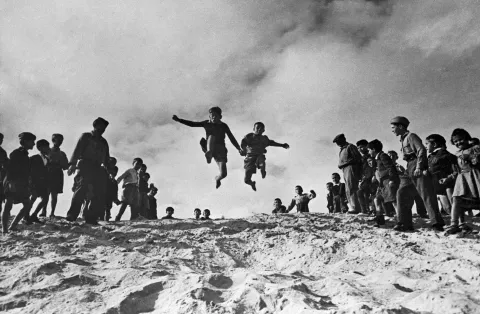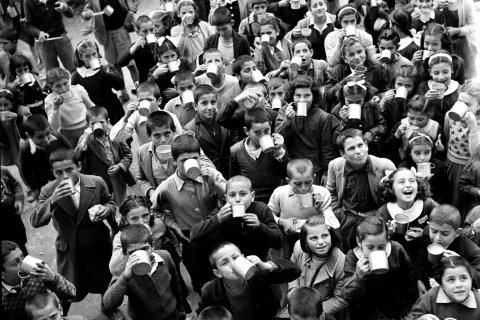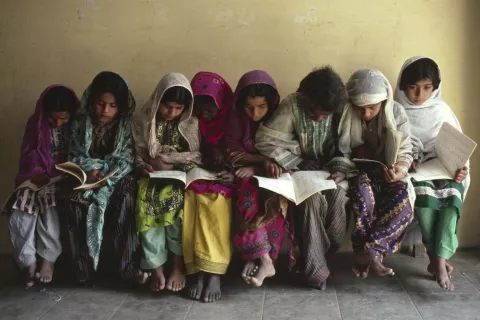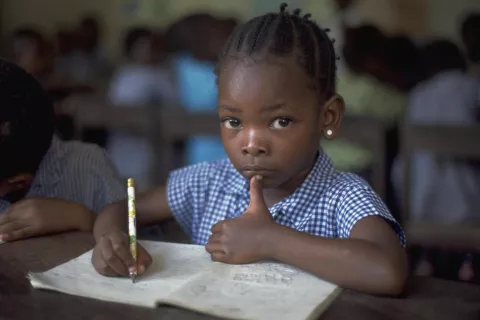Becoming the leading voice: 2006–2020
See how UNICEF has become the world’s primary voice for child survival and development.

As the world faced multiple crises — natural disasters, climate change, rising poverty and inequality that affect the most vulnerable and the COVID-19 pandemic — UNICEF took a leading role in ensuring global recovery, challenging systemic inequity around the world and prioritizing investments for children.
2010
A magnitude 7 earthquake kills nearly 160,000 people and displaces more than 1 million people from their homes in Haiti. UNICEF leads the international response on behalf of children.

The upheaval of the Arab Spring and the crisis in the Syrian Arab Republic pose major challenges for UNICEF and other humanitarian agencies.

2012
In joining the International Aid Transparency Initiative (IATI), UNICEF commits to greater transparency in all its work, so that its methods can be understood.
UNICEF hosts the first Forum of the Global Partnership on Children with Disabilities.

2014
UNICEF launches the first version of RapidPro – an open-source platform for sharing real-time data across health, education and youth engagement platforms.

On February 11, 2014, India – where once there were 200,000 crippling cases of polio a year – celebrates six years without a case of wild poliovirus.
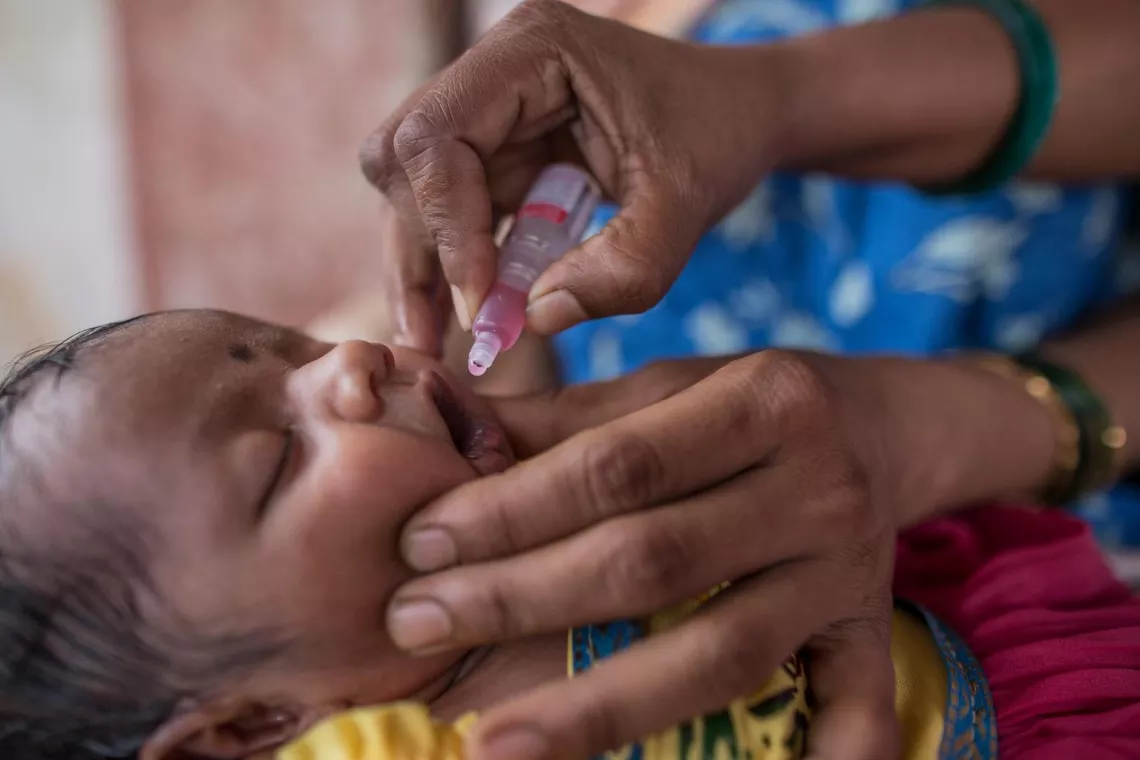
2015
Mobile technology makes the distribution of medicine and supplies faster and more accurate. This becomes especially important during the Ebola crisis in West Africa.

The UNICEF Office of Innovation inspires new and creative approaches, partnerships and technologies that can improve the lives of children.
2016
UNICEF is at the forefront of fighting Zika virus, which causes microcephaly in the womb and can impair the physical and intellectual development of babies.

2018
Generation Unlimited, a global partnership of policy-makers, CEOs, civic leaders, and philanthropists is launched at the United Nations General Assembly. It’s aim is to expand education, vocational training, and employment opportunities for young people.

2019
More than 1.5 million children in Mozambique, Malawi and Zimbabwe are left without homes, schools, health centres, food or protection in the wake of Cyclone Idai. UNICEF brings safe water and sanitation kits, vaccination and screening for malnutrition, and psychosocial support them.

On the 30th Anniversary of the ratification of the Convention on the Rights of the Child, UNICEF takes stock of the achievements of the past three decades and advocates for the critical work that remains. UNICEF also supports young petitioners to file a complaint with the Committee on the Rights of the Child to address the climate crisis.

2020
As the COVID-19 pandemic grips the world, UNICEF plays a key role in the United Nations’ global response to the crisis and as part of the global vaccine distribution plan — COVID-19 Vaccine Global Access Facility (COVAX). We are leading efforts to procure and supply COVID-19 vaccines so that all countries have fair and equitable access to the vaccine.

Throughout its history, UNICEF has worked to drive change for the most disadvantaged children. Today we continue to work to promote the rights and well-being of children everywhere.
Discover why we do what we do in our mandate and mission.

